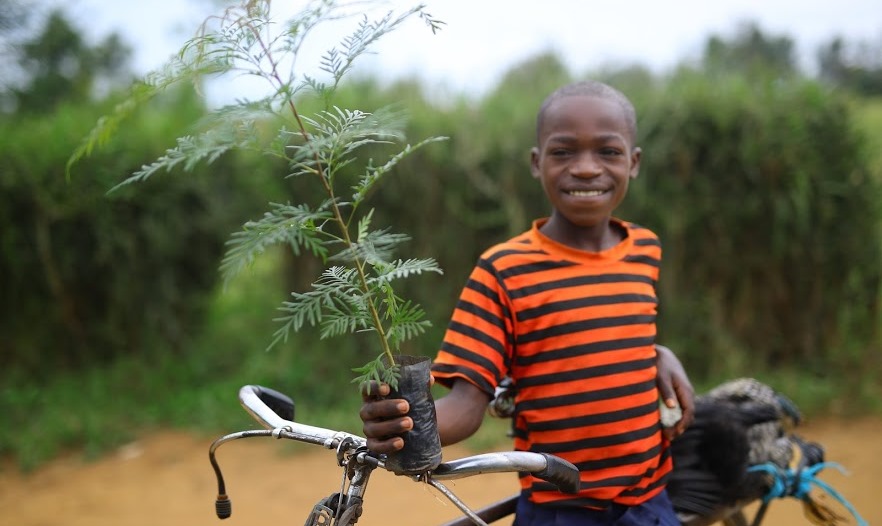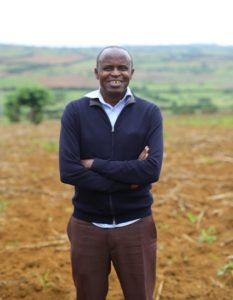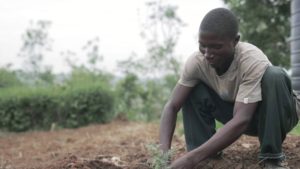In eastern Rwanda, Jean Baptiste Mutabaruka is on the road to the local bank, again. When he gets there, he will inquire once more about raising money for an idea he thinks will reduce poverty in his small farming community of 60,000.
For 10 years, Jean Baptiste has journeyed through the parched villages of the Karangazi Sector in soaring heat to champion the planting of trees. He’s sees it as a potent antidote to widespread poverty in the region.
According to research conducted by the World Resources Institute (WRI), he’s right. Restoring trees would likely lead to increased land productivity, as well as improving food and water security. The Tigray region of Ethiopia halved its poverty level through restoring land over the last 20 years.
If trees flourished here, their shade would protect the water supply for cattle and the soil from extreme weather, boosting crop harvests. Their leaves would provide food for farm animals. Avocados, mangoes, guavas and papayas, fruits that grow on trees, would improve nutrition for villagers reliant on mainly maize and beans.
The only way to reach the worldwide commitments of restoring 160 million hectares is to empower thousands of champions like Jean Baptiste, and replicate to good ideas many thousands of times. What if he, and millions more in similar positions, had access to funds?
In the case of Karangazi, Jean Baptiste needs around $13,000 for the first two years of his project: Compagnie Agricole Environment (CAE), his charity, organizes environmental clubs for local kids, then outfits them with trees to plant (To start, they’re receiving hardy Grevilleas trees). CAE holds weekly meetings with the children to discuss how to keep the trees alive, supplying them with the knowledge and resources to restore the land they live on.
WRI is addressing this in a crowdfunding trial to channel funds to those advancing small-scale restoration, the farmers and local champions.
They have teamed up with CAE to help him help his local community, and to show others that success is achievable. In the future, WRI hopes to bundle projects together to attract larger investors. This approach is already leading to benefits for farmers and the land, as well as profit, in the world of restoration. Kenyan timber supply company Komaza, for example, is purchasing timber from—and thereby providing jobs for—more than 9,000 small farmers.
There are millions of others like Jean Baptiste, trying to breathe life back into land worldwide, land lost to forest clearance, overgrazing and droughts brought on by climate change. Around 2 billion hectares of land – an area twice the size of China – is now degraded, affecting people with some of the lowest incomes and costing the world $6.3 trillion per year.
Governments have committed to restore 160 million hectares, including through initiatives such as AFR100 (which aims to bring 100 million hectares of African land into restoration by 2030). There is increasing investment in restoring land too.
Despite governmental pledges, the sector still faces a massive funding gap of around $300 billion per year. Moreover, the funding that does exist is not reaching those heralding change in their communities.
But many restoration projects are too small to be attractive to institutional investors looking to invest a minimum of $50 million. Please support Jean Baptiste via the link below.
All photos courtesy of WRI.
Donate to Jean Baptiste’s restorative work here.
Read the full story on the World Resources Institute website.



